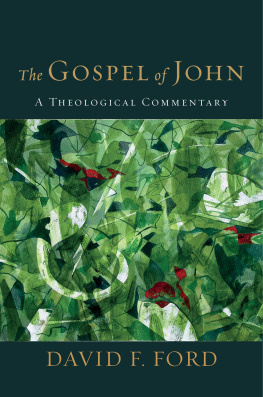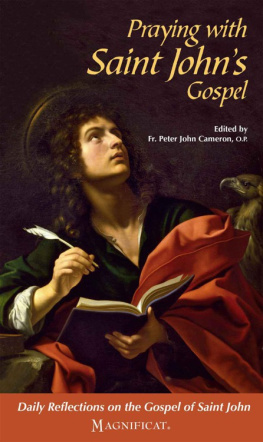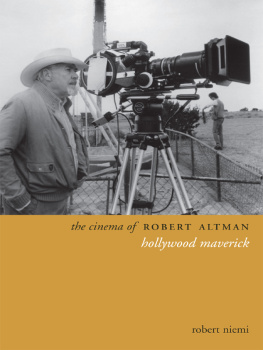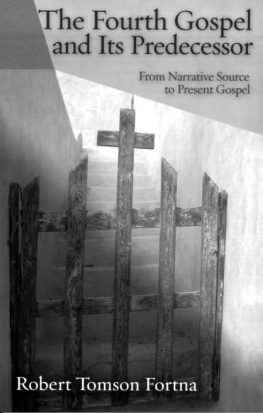Robert Kysar - John, the maverick Gospel
Here you can read online Robert Kysar - John, the maverick Gospel full text of the book (entire story) in english for free. Download pdf and epub, get meaning, cover and reviews about this ebook. City: Atlanta, year: 1976, publisher: John Knox Press, genre: Religion. Description of the work, (preface) as well as reviews are available. Best literature library LitArk.com created for fans of good reading and offers a wide selection of genres:
Romance novel
Science fiction
Adventure
Detective
Science
History
Home and family
Prose
Art
Politics
Computer
Non-fiction
Religion
Business
Children
Humor
Choose a favorite category and find really read worthwhile books. Enjoy immersion in the world of imagination, feel the emotions of the characters or learn something new for yourself, make an fascinating discovery.
- Book:John, the maverick Gospel
- Author:
- Publisher:John Knox Press
- Genre:
- Year:1976
- City:Atlanta
- Rating:5 / 5
- Favourites:Add to favourites
- Your mark:
- 100
- 1
- 2
- 3
- 4
- 5
John, the maverick Gospel: summary, description and annotation
We offer to read an annotation, description, summary or preface (depends on what the author of the book "John, the maverick Gospel" wrote himself). If you haven't found the necessary information about the book — write in the comments, we will try to find it.
John, the maverick Gospel — read online for free the complete book (whole text) full work
Below is the text of the book, divided by pages. System saving the place of the last page read, allows you to conveniently read the book "John, the maverick Gospel" online for free, without having to search again every time where you left off. Put a bookmark, and you can go to the page where you finished reading at any time.
Font size:
Interval:
Bookmark:

Third Edition
ROBERT KYSAR
vii
Chapter 2: 71
Chapter 4: 115
Appendixes
This book is addressed to the beginning student of New Testament literature. It does not pretend to be either technical or scholarly, but aspires to introduce the reader to the thought and symbolism of the Fourth Gospel as those matters are increasingly understood among contemporary New Testament scholars. I hope to lead readers into the Fourth Gospel and bring them abreast of the way this Gospel is understood by a number of more advanced students.
Among the various introductions to the Fourth Gospel available, I hope this volume will accomplish a number of distinctive things. First, I hope to stress the uniqueness of the Fourth Gospel among the literature of the early Christian movement. Second, and at the same time, I want to set the thought and symbolism of the Gospel in a much broader context, namely, that of the universal human religious quest. The Gospel of John, this volume proposes, represents an exemplary piece of religious literature that poses questions that transcend Christianity alone to stand within the context of religion in general. The third peculiar feature of this introduction is its effort to keep the reader involved in the text of the Gospel itself. Too often, reading an introduction to the New Testament or some specific portion of it draws the reader away from the document itself and into a concentration on secondary literature. So the following pages are punctuated with insertions titled "Reader's Preparation." These suggestions for reading in the Gospel will, I hope, make the task a threeway discussion-a conversation among the Gospel, the reader, and the ideas of this book. The degree to which the reader is kept involved with the other two parties of this triad is the degree of the success of the book itself.
It has often been said that creativity is the art of forgetting the source of one's ideas. That is surely the case with the ideas of this book. While I have tried to acknowledge the sources of my major ideas when I am conscious of them, I am sure that in many cases forgetfulness alone accounts for what may appear to be creativity. Still, this sort of book should not be burdened with footnotes. So I ask the indulgence of my colleagues in Fourth Gospel criticism and implore the reader to take seriously the fact that the book is heavily indebted not only to the volumes listed in the bibliography but also to a multitude of readings and conversations.
A history of this book would entail nothing short of an autobiography, since it represents my lifelong struggle with the Gospel of John. Reactions to the previous editions of this volume seem to indicate that it "worked"-at least in large part. The old saying "If it ain't broke, don't fix it" is good advice. Therefore, it is risky to tamper with that which seems to have accomplished its original purpose. Still, my own struggle with the Fourth Gospel has continued in the years since I published the second edition. Those years have also seen many changes in the scholarly study of the Gospel of John as well as in my own view of it. And books, after all, should change and grow even as people do.
There are ways, too, in which the first and second editions did not deal with all that the reader had the right to expect of an introduction to the religious thought of the Fourth Gospel. Some additions and changes were called for, especially with regard to developments in biblical interpretation as a whole. Not least of these has been the expansion of the "new literary criticism" and the advent of what seems to be a "postmodern criticism." In this third revised edition, I hope to bring these critical methods into the discussion of the Gospel of John without deleting the contributions of the historical-critical methods. Whether this endeavor will succeed depends on how you, the readers, respond.
As was the case with the earlier editions, I owe thanks to a host of important people in the history of this book. First and most prominent among them are my students over the years. The ideas of this book reflect numerous efforts to interpret the Gospel to groups of beginning students, as well as seasoned pastors and teachers in the church, and to respond with some degree of clarity to their concerns. Some were young, some old, some within an academic (both undergraduate and graduate) setting, and some within a church setting. The chapters actually originated years ago in my preparation for a lay Bible study group in a congregation. Since then they have been revised numerous times for other groups and in response to new insights I gained from learners.
I am indebted to all who have offered critical remarks concerning the earlier editions and to colleagues in Johannine studies who, like my students, persistently refuse to allow me to become content with all that I once thought was true. In particular, I am grateful for the stimulation of the annual meetings of the Society of Biblical Literature.
Most important, I again thank my spouse, the Rev. Dr. Myrna C. Kysar. Her theological perception and her understanding of human nature have taught me a great many things, and without her encouragement of my literary efforts this volume would not exist. Another individual who has shaped the whole of my career is Edward P.Blair, Professor Emeritus of Garrett Evangelical Theological Seminary. It is with gratitude for all that he taught me that I dedicate this volume to him.
There is a delightful animated film about a small boy who learned to walk on his hands instead of his feet. The story stresses the pressures toward conformity in our society. The little boy's strange behavior had the most pleasant results for him. Walking on his hands gave him a radically different perspective on the world. He could smell the flowers without bending down. He was close to the earth so that he could see vividly the beauty of grass, and he met the butterfly eyeball to eyeball as it skimmed along the ground. But his parents were deeply distressed. Their darling child was a misfit! So they took him first to a medical doctor, then to a psychiatrist, and then to a social worker. All of the newest theories were employed to change the little boy's behavior. Gradually he was made to learn to walk like all other humans-on his feet. The parents were relieved; the doctors, social workers, and others who had helped were proud of their success. But now the little boy began to see the world as others saw it: dirty, ugly, polluted, and filled with persons obediently doing what was expected of them. His short-lived posture that had enabled him to appreciate more easily the beauty of the world was ended. Now he was like everyone else!
This parable illustrates the manner in which conformity is given high priority in our society. It also suggests the way in which nonconformist positions in religion are made to fit into the mainstream of traditional thought. By their very nature, religions must be homogeneous, lest their claim to the truth about human existence and the cosmos seem compromised. Sometimes a religious tradition is flexible enough that it somehow manages to encompass variations of interpretation within its midst. Hinduism is an example. Other religious traditions more characteristically tend to abort heterodox movements. The history of Christianity is dotted with such events, most especially the fragmentation of Protestantism. One way or another, religions must deal with the nonconformists-those who appear to walk on their hands.
Font size:
Interval:
Bookmark:
Similar books «John, the maverick Gospel»
Look at similar books to John, the maverick Gospel. We have selected literature similar in name and meaning in the hope of providing readers with more options to find new, interesting, not yet read works.
Discussion, reviews of the book John, the maverick Gospel and just readers' own opinions. Leave your comments, write what you think about the work, its meaning or the main characters. Specify what exactly you liked and what you didn't like, and why you think so.












